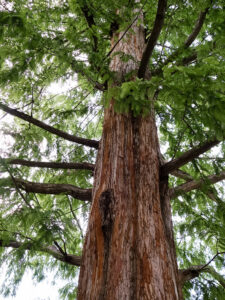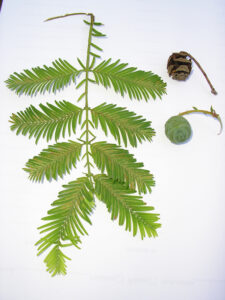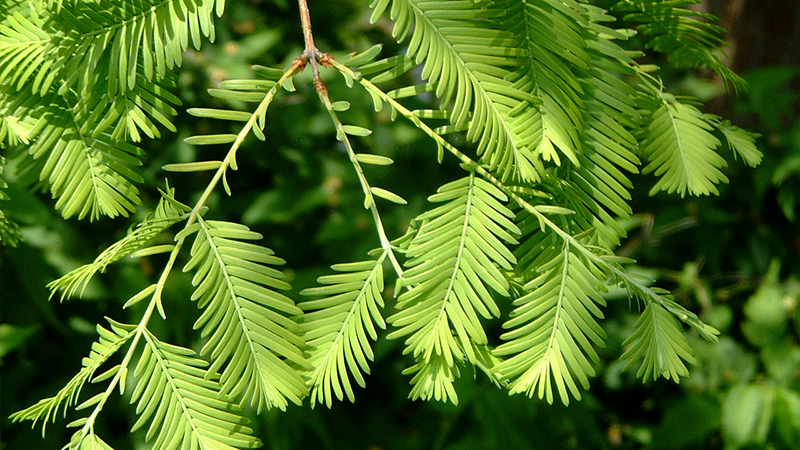Dawn Redwood
 Dawn redwood or Metasequoia glyptostroboides. Is it an acquired taste, the conifer that loses its needles in the fall? Or is it just for folks who are bored with everything in the garden and looking for something new?
Dawn redwood or Metasequoia glyptostroboides. Is it an acquired taste, the conifer that loses its needles in the fall? Or is it just for folks who are bored with everything in the garden and looking for something new?
The dawn redwood isn’t exactly new. They were all over the northern hemisphere about 50 million years ago, shading the dinosaurs. Until the 1940s, though, we only knew of it through fossils. Then, in 1947, a small stand was discovered growing wild in Hubei province, China. Since then, seeds were distributed around the world to arboreta. In the 1990s, the variety ‘Gold Rush’ was discovered and the tree became available to the home gardener.
 There are a few conifers that lose their needles in the fall, like bald cypress and larch. It is unclear why dawn redwoods lose their needles. There are theories about larch losing their needles because of the harsh conditions they exist in; snow is less likely to collect on a needle-less branch and break it. Those conditions don’t exist for dawn redwoods in their native land, nor for bald cypress, which grow in the swamps of the Carolinas. Why do dawn redwood lose their needles? Beats me.
There are a few conifers that lose their needles in the fall, like bald cypress and larch. It is unclear why dawn redwoods lose their needles. There are theories about larch losing their needles because of the harsh conditions they exist in; snow is less likely to collect on a needle-less branch and break it. Those conditions don’t exist for dawn redwoods in their native land, nor for bald cypress, which grow in the swamps of the Carolinas. Why do dawn redwood lose their needles? Beats me.
The dawn redwood is hardy to Zone 5. It likes water; in fact, it won’t be bothered if planted in an area that gets standing water. It prefers the acid side of the spectrum. It grows fast and it grows big. Not so big as its big cousins the sequoias, which will grow as tall as 350 feet, but big enough. In China, it has been recorded at over 150 feet tall. In Ontario, though, ‘Gold Rush’ is likely to attain a height of about 50 feet. And it likes sun. What tall tree doesn’t?
To get access to all our local content, subscribe now!






Pingback: Possibly the Weirdest Looking Tree in Ontario | Strange Ontario